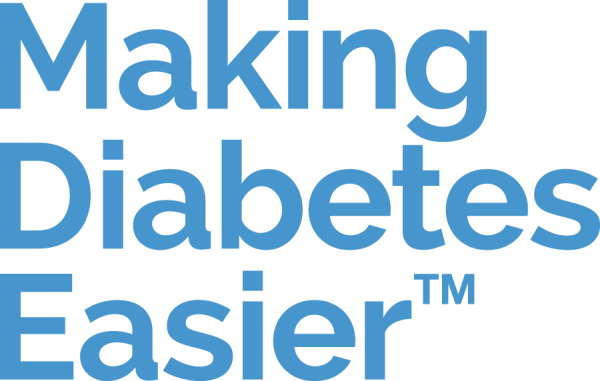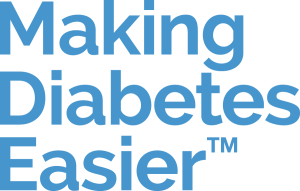Insulin Pumps For Children: When And How To Use One

Insulin pumps can improve glycaemiccontrol and allow for more precise and flexible insulin dosing in adults with diabetes, but are they suitable for children [1]?
In this article, we zoom in on the use of insulin pumps in children, answering questions such as: can your child benefit from an insulin pump, and are they good candidates for it? What are the benefits and disadvantages of using an insulin pump in children? Is there a minimum age for a child to get an insulin pump?
Find out the answers to these questions below.
What is an insulin pump?
An insulin pump is a small electronic device that delivers rapid-acting insulin to your body as and when it needs it [1]. They can stay in place for 2–3 days [2].
There are two main types of insulin pumps [1]:
-
With tubing, sometimes called a traditional pump or a tethered pump
-
Without tubing, also called a ‘patch pump’
The traditional insulin pump delivers insulin through a small catheter (a small tube with a needle) which is inserted under your skin and secured with adhesive. This is often called an ‘infusion set’ or an ‘infusion cannula’ [1].
A plastic tubing connects the infusion set to the pump and delivers the insulin from the pump to you under your skin [1].
The ‘patch pump’ does not use tubing and instead sticks right onto your skin with the help of a patch. Tubeless patch pumps contain an insulin reservoir. The insulin is delivered through the infusion cannula and the remote-controlled pump using wireless technology [1].
Insulin pumps deliver insulin in two main ways [1, 2]:
- A basal rate — A consistent delivery of rapid-acting insulin during the entire span of day and night.
- Bolus doses — additional, correction doses of insulin given or insulin to cover meals and snacks.
Most insulin pumps have a bolus calculator that works out a recommended bolus dose using the current blood glucose levels, the total grams of carbs consumed as entered by the user, the remaining insulin from previous bolus doses and individualised setting to calculate if a correction dose needs to be added [1].
Can my child have an insulin pump?
Insulin pumps can be used in children and adolescents with type 1 diabetes and may provide many health benefits [1]. However, there are important factors to consider before you decide whether an insulin pump is right for your child.
Some aspects that parents and caregivers may carefully consider include [2]:
- Is the child willing and motivated to wear the insulin pump?
- Will the child tolerate setting up the insulin pump, which involves using a catheter and a small needle?
- Does the parent/caregiver fully understand basal-bolus insulin therapy?
- Is the parent/caregiver and/or child or adolescent confident in counting carbohydrates consumed?
- Does the parent/caregiver know how to operate an insulin pump or is willing to learn?
- Does the parent/caregiver have support/partnerships with school staff and other caregivers willing and able to work with an insulin pump?
- Is the child willing to take several blood glucose tests per day? And are the parents/caregivers willing to help them? (Usually, blood glucose must be tested 4–6 times daily to adjust the bolus doses, make sure the pump is working correctly, and ensure that blood glucose levels are in check [3])
- Do the child and parent have a team of healthcare professionals available to help and support them through initiating insulin pump therapy? [2, 3]
It is also important to remember that you and your child must receive training about insulin pumps and their functionalities.
Starting insulin pump therapy with a specialist diabetes care team (including a nurse, a physician, and a dietitian with experience in insulin pumps ) is recommended, rather than starting it with a primary care physician (like your General Practitioner) [3].
What are the benefits of an insulin pump for children?
There are many advantages to insulin pump use for children, many of which are similar to those of insulin pump therapy for adults:
- Insulin pumps allow for multiple basal insulin rates to be administered and deliver small doses approximately every few minutes. This attempts to mimic the activity of a healthy pancreas. Coupled with blood glucose monitoring, this allows for more precise and personalised insulin delivery [4, 5].
- Insulin pumps can improve glycaemiccontrol and diabetes outcomes [2, 4] and help children lead a more flexible lifestyle [2]. Adjusting insulin doses with exercise or during travel is easier with a pump [4]. Insulin pumps may reduce hypoglycaemia during and after exercise in young people with type 1 diabetes [4].
- Insulin pumps make it easier to adjust basal insulin rates in special circumstances — such as skipping meals, eating less, or being sick — in an impossible way with injection therapy [4].
- Bolus insulin doses make it easier and more convenient to control blood glucose levels after eating and to bring down high glucose levels [4].
- A consistent observation noted following the uptake of insulin pump therapy is a reduction in both the frequency and severity of hypoglycaemia among children and teens with type 1 diabetes [6]. Pump therapy is also associated with a lower rate of hypoglycaemic coma than multiple injection therapy, particularly in school-aged children [7].
- The risk of diabetic ketoacidosis (DKA) is also lower in young people who use insulin pumps compared with young people who take multiple injection therapy [4, 7].
- Studies have shown that families whose children use insulin pumps have improved quality of life [6].
What are the disadvantages of an insulin pump for children?
Insulin pump therapy for children may also pose several problems that are highly important to consider:
- Very young children cannot manage their pumps without help from their parents, and caregivers. Even older children may need continuous support and assistance from their parents or caregivers [2].
- Children may forget to administer insulin boluses after eating; ‘forgetting’ is the most common reason for missing boluses and a significant challenge for kids and teens who use insulin pumps [4].
- Because kids spend a large part of their time at school, school staff may need to be educated on using insulin pumps, measuring blood glucose, measuring ketones, responding to emergencies, or having to troubleshoot the pump [4].
- The risk of complications such as ketoacidosis may result from using insulin pumps. If the insulin pump malfunctions or the infusion set is displaced or clogged, ketoacidosis can occur in 3–4 hours if not quickly dealt with [5]. A pump delivers small doses of rapid-acting insulin, so there is no long-acting insulin to fall back on [4, 5].
- Insulin pump therapy has been associated with weight gain [4], which may be particularly distressing for teenagers.
- There is a risk of skin infections at the cannula site [4, 5]. Infusion-site infections are the most common complication associated with insulin pump therapy can cause inflammation, soreness, redness and swelling at the infusion site [5].
- Children and adolescents may dislike feeling tied or ‘tethered’ to their pump [5].
- The cost of an insulin pump and supplies cost more than MDI. The relatively high cost of buying an insulin pump and maintaining pump therapy can be a considerable barrier for many families [5].
- One of the risks of insulin pump use is unexplained hyperglycaemia [5]. This may be caused by mechanical problems, pump malfunction or infusion-site issues [5].
You must consider both the pros and cons of insulin pump therapy for your child before making a final decision. Your diabetes care team will be able to help with this.
What is the minimum age a child can get an insulin pump?
There is no internationally defined minimum age for a child to get an insulin pump.
Insulin Pumps are offered to kids as per the product indication of 6 years or older. [6]. Many studies showcase the benefits of using insulin pumps even in very young children demonstrating improved glycaemic control and a reduction in hypoglycaemia compared to the use of MDI [1]. The advantages of insulin pumps in managing unpredictable eating habits and low insulin requirements in very young children may make insulin pump therapy a good option for children with type 1 diabetes and their families [1].
It is worth noting, though, that some trials have shown no difference in glycaemic control in young children under seven when comparing insulin pump therapy to MDI [1] and that more randomised studies — and larger studies — need to be carried out to fully understand the benefits and downsides of insulin pumps for children [6].
According to clinical guidelines from various diabetes organisations worldwide — the American Diabetes Association, the International Society for Pediatric and Adolescent Diabetes, or the Endocrine Society — insulin pump therapy can benefit all individuals with type 1 diabetes ‘regardless of age’ [1].
It is important to remember that using insulin pumps in different age groups may pose unique challenges. You can discuss the most suitable options for your child with your diabetes care team.
Should your child have an insulin pump?
There are many important things to consider before deciding to get an insulin pump for your child.
Studies show that pump therapy has many benefits for children with type 1 diabetes, though, of course, as with any treatment choice, there are disadvantages to using insulin pumps for children, too [1, 2, 4, 5, 6].
An insulin pump will require effort, commitment, and willingness to learn, especially in the beginning [2].
However, with education, diligence, and support, insulin pumps may improve the quality of life for your child [3]. Furthermore, insulin pump technology is advancing rapidly. As more options become available on the market, this therapy is bound to become increasingly more convenient and widely available [1].
Sources
- Berget, Cari, Laurel H. Messer, and Gregory P. Forlenza. A clinical overview of insulin pump therapy for the management of diabetes: past, present, and future of intensive therapy. Diabetes Spectrum 32.3; 2019: 194-204. https://www.ncbi.nlm.nih.gov/pmc/articles/PMC6695255/
- Is an Insulin Pump Right for Your Child and Family?. Diabetes Spectr 1 April 2001; 14 (2): 90. https://doi.org/10.2337/diaspect.14.2.90
- Pickup, John C. Insulin-pump therapy for type 1 diabetes mellitus. New England Journal of Medicine 366.17 (2012): 1616-1624. http://pedsendo.net/wp-content/uploads/2015/08/Pump-therapy-DM.pdf
- Maahs, David M., Lauren A. Horton, and H. Peter Chase. The use of insulin pumps in youth with type 1 diabetes. Diabetes technology & therapeutics 12.S1 (2010): S-59. https://www.researchgate.net/publication/44642359_The_Use_of_Insulin_Pumps_in_Youth_with_Type_1_Diabetes
- Potti, Lakshmi G., and Stuart T. Haines. Continuous subcutaneous insulin infusion therapy: a primer on insulin pumps. Journal of the American Pharmacists Association 49.1 (2009): e1-e17. https://linkinghub.elsevier.com/retrieve/pii/S1544-3191(15)30945-6
- Dawes, Adam, The use of insulin pumps in children and young people: Past, present and future. Journal of Diabetes Nursing 23.5 (2019): 97. https://diabetesonthenet.com/journal-diabetes-nursing/use-insulin-pumps-children-and-young-people-past-present-and-future/
- Karges, Beate, et al. Association of insulin pump therapy vs insulin injection therapy with severe hypoglycemia, ketoacidosis, and glycemic control among children, adolescents, and young adults with type 1 diabetes. Jama 318.14 (2017): 1358-1366. https://jamanetwork.com/journals/jama/fullarticle/2656808



